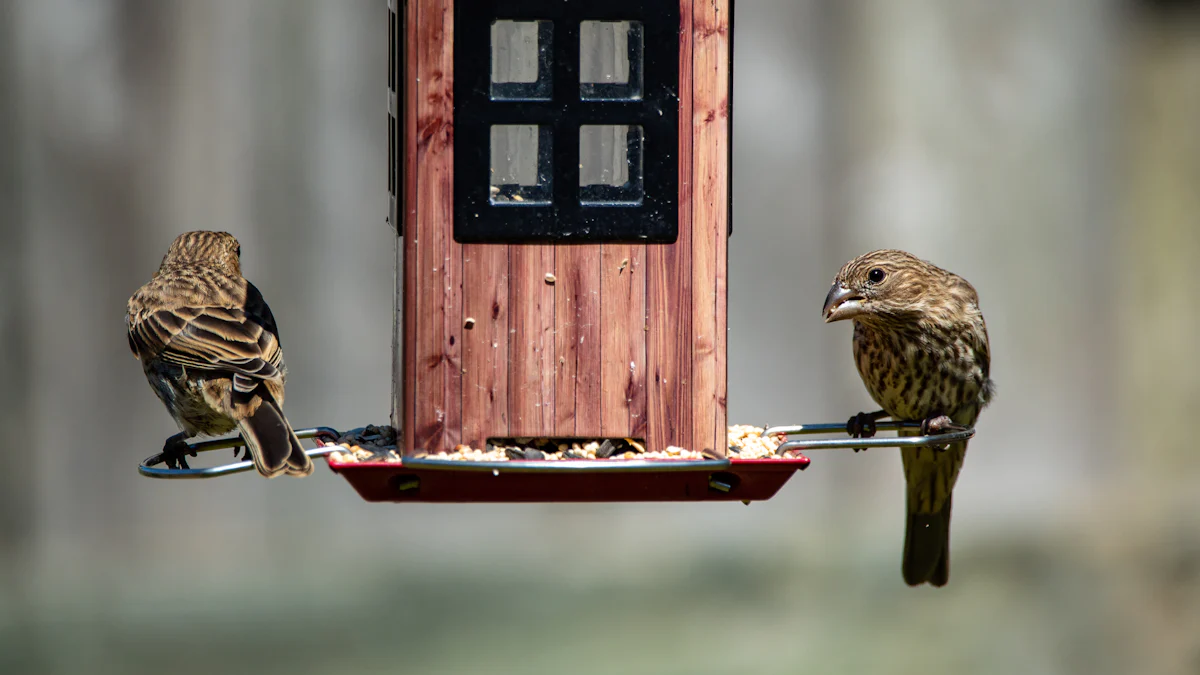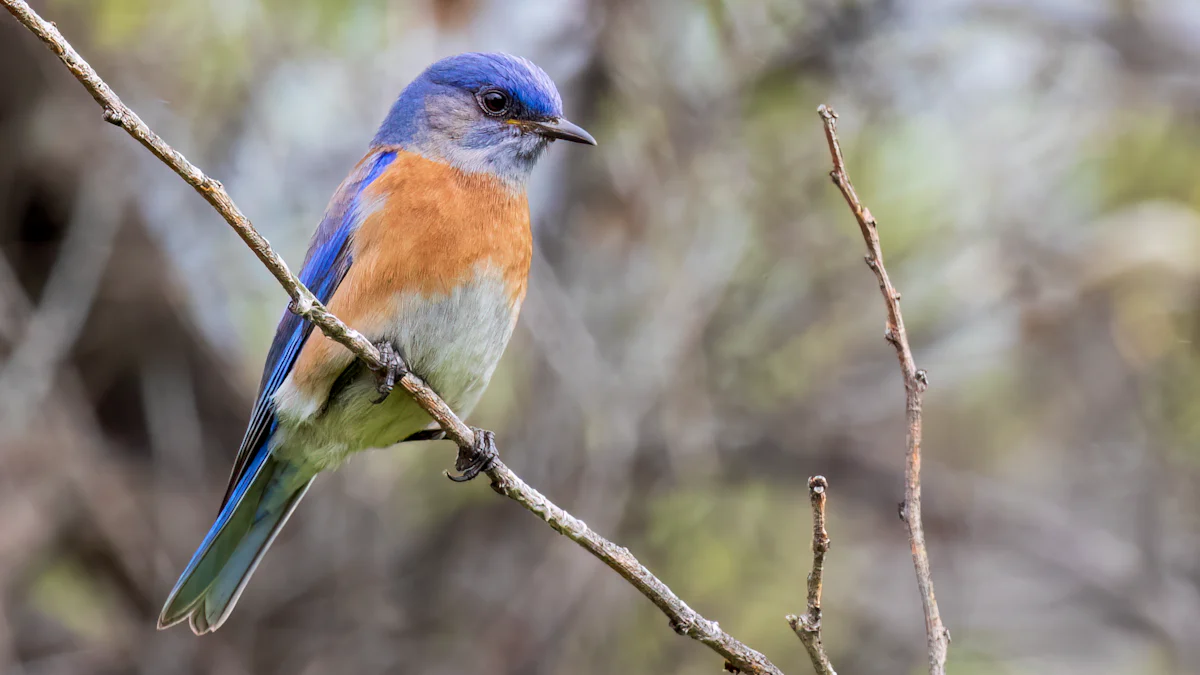
Mealworms provide an irresistible treat for birds. Packed with protein, they help birds stay strong and healthy. During nesting and migration, birds need extra energy. Offering mealworms for birds can make your yard a haven for feathered visitors. High-quality mealworms meet FDA standards, ensuring safety for wildlife. Start feeding today!
Key Takeaways
- Mealworms are healthy for birds, giving them protein and energy.
- This is very helpful during nesting and migration times.
- Using both live and dried mealworms can bring many bird types.
- This makes birdwatching in your yard more exciting and fun.
- Storing and feeding mealworms the right way keeps them fresh.
- Fresh mealworms are safer and better for birds in your yard.
Why Mealworms Are Beneficial for Birds

Nutritional Value of Mealworms
Mealworms are a powerhouse of nutrition, making them an excellent food choice for birds. They contain 50-60% protein by dry weight, which is essential for muscle development and overall health. Birds also benefit from the high fat content in mealworms, which provides the energy needed for activities like flying and feeding their young. Additionally, mealworms are rich in B vitamins, such as riboflavin, which supports metabolism, and minerals like calcium and phosphorus, which are vital for bone health.
Compared to other bird food options, mealworms stand out as a concentrated source of essential amino acids that promote feather growth and immune health. Their nutritional profile makes them particularly valuable during breeding and migration seasons when birds require extra energy and nutrients.
Bird Species That Love Mealworms
Many bird species find mealworms irresistible. Some of the most common visitors to mealworm feeders include:
- Bluebirds
- Chickadees
- Thrushes
- Titmice
- Wrens
- Nuthatches
- Kinglets
These birds are drawn to the high protein and energy content of mealworms, which help them thrive in various seasons. Adding mealworms to your yard can attract a diverse range of feathered friends, making birdwatching even more enjoyable.
Seasonal Benefits of Mealworms for Birds
Mealworms play a crucial role in supporting birds during nesting and migration seasons. During the breeding season, parent birds need extra protein to feed their young. Mealworms provide the nutrients necessary for nestlings to grow strong and healthy.
Live mealworms also offer hydration, which is especially beneficial for nesting birds and their chicks. By conserving energy and providing essential nutrients, mealworms help birds survive and thrive during this demanding period.
During migration, birds expend significant energy traveling long distances. The high fat content in mealworms gives them the fuel they need to complete their journeys. Offering mealworms for birds during these critical times can make your yard a vital resource for local and migratory species.
How to Feed Mealworms to Birds
Live vs. Dried Mealworms: Pros and Cons
Choosing between live and dried mealworms depends on your preferences and the needs of the birds. Live mealworms offer several advantages:
- Birds are naturally drawn to the wriggling motion, which mimics their natural prey.
- The movement makes live mealworms easier for birds to spot while flying.
- They provide hydration, especially crucial for nestlings, as giving water directly can be risky.
However, live mealworms require proper care and storage, which may not appeal to everyone. Dried mealworms, on the other hand, are more convenient. They are easy to store and handle, making them a practical choice for beginners. Yet, dried mealworms may not attract as many birds since most species prefer live ones. Improper storage can also cause dried mealworms to spoil quickly.
Feeding Frequency and Seasonal Adjustments
Adjusting feeding frequency ensures birds receive the nutrition they need throughout the year. During spring, birds require more protein for laying eggs and feeding their young. Offering mealworms daily during this time supports their increased energy demands. In migration seasons, such as late April to May and October to November, mealworms provide essential fuel for long journeys.
In summer, when temperatures exceed 90°F, mealworms help birds stay energized. During winter or cold bursts, offering mealworms can supplement their diet when natural food sources are scarce. In seasons with abundant food, occasional feeding can still attract birds to your yard.
Tips for Introducing Mealworms to Your Yard
Introducing mealworms for birds to a new yard requires strategy. Start by offering a mix of live and dried mealworms to see what the birds prefer. Scatter mealworms on the ground to mimic natural foraging. Use a dedicated mealworm feeder or add them to suet cakes for variety. Mixing mealworms with birdseed can also encourage birds to try them.
Placement matters too. Open areas attract species like bluebirds and robins, while spots near cover appeal to chickadees and jays. Always place feeders away from potential predators, such as cats, to create a safe feeding environment. With patience, birds will recognize your yard as a reliable food source.
Best Feeders for Mealworms

Types of Feeders for Mealworms
Choosing the right feeder ensures birds can easily access mealworms while keeping them safe and fresh. Several feeder types work well for mealworms:
- Tray Feeders: These provide an open design, making them easy to clean and refill. Birds can perch comfortably while feeding.
- Dish Feeders: Compact and ideal for small spaces, these feeders are perfect for yards with limited room.
- Hanging Feeders: Versatile and elevated, they protect mealworms from ground pests like ants and rodents.
When selecting a feeder, look for features that enhance functionality. Feeders with tall sides prevent mealworms from escaping. A roof or rain guard shields the mealworms from bad weather, while drainage holes keep them dry. Tamper-resistant designs also deter unwanted pests, ensuring the mealworms remain accessible only to birds.
Preventing Pests and Other Animals
Pests and other animals can disrupt feeding stations, but the right feeder design minimizes this issue. Containers with steep sides, such as glass or ceramic dishes, keep mealworms secure and prevent them from escaping. Sturdy plastic feeders also work well, offering a stable perch for birds while keeping pests at bay. By using these feeders, bird enthusiasts can reduce losses and maintain a clean feeding area.
Placement Tips for Mealworm Feeders
Strategic placement of mealworm feeders maximizes bird activity in the yard. Consider these tips:
- Open Areas: Birds like bluebirds and robins prefer open spaces where they can spot predators. Place mealworms in flat dishes or platform feeders in these locations.
- Near Cover: Chickadees and jays feel safer near shrubs or trees. Position feeders close to natural cover to attract these species.
- Away from Cats: Domestic cats pose a significant threat to birds. Ensure feeders are placed in cat-free zones to create a safe feeding environment.
By following these placement strategies, birdwatchers can attract a variety of species while ensuring their safety. Offering mealworms for birds in well-chosen spots transforms any yard into a bird-friendly haven.
Storing Mealworms for Birds
Proper Storage for Live Mealworms
Proper storage ensures live mealworms remain fresh and nutritious for birds. Refrigeration at 45-50°F keeps mealworms dormant, extending their usability to 6-10 weeks. At room temperature, they last only about three weeks before transforming into pupae or dying. Weekly care is essential. Remove mealworms from the fridge for 24 hours to feed them at room temperature, then return them to refrigeration. This routine prevents starvation and ensures they remain a high-quality food source.
Lower temperatures slow metamorphosis, keeping mealworms in their larval stage for up to two months. This makes refrigeration the best option for long-term storage. Always use a container with smooth sides to prevent escape and suffocation.
Storing Dried Mealworms Safely
Dried mealworms require careful storage to maintain their quality. Airtight containers prevent moisture absorption, which can lead to spoilage. Store them in a cool, dry place away from heat and humidity. For surplus mealworms, freezing in airtight containers at temperatures below -15°C extends freshness for over six months.
Before use, check for signs of spoilage, such as foul odors, discoloration, or mold. These indicators suggest the mealworms are no longer safe for birds. Proper storage ensures dried mealworms remain a reliable and nutritious option for feeding.
Common Storage Mistakes to Avoid
Avoid common mistakes to keep mealworms fresh and safe. Using improper containers can lead to suffocation or escape. Always choose containers with smooth sides and adequate ventilation. For live mealworms, neglecting weekly feeding can result in malnourished larvae, reducing their nutritional value.
Moisture management is crucial. Provide hydration through raw vegetables or gel water sources, but avoid standing water, as mealworms can drown. Regularly replace bedding to maintain a clean environment. Moldy food or bedding can harm mealworms, making them unsuitable for birds. Proper care ensures mealworms for birds remain a high-quality food source.
Where to Buy Mealworms for Birds
Local Retailers and Garden Centers
Local retailers and garden centers offer several advantages for purchasing mealworms. Shoppers can inspect the quality of the mealworms before buying, ensuring they are fresh and free from defects. Immediate access to the product eliminates waiting for shipping, making it a convenient option for those needing mealworms quickly. Knowledgeable staff at these locations can provide valuable advice on feeding techniques, storage tips, and the best feeders to use. For those who prefer a hands-on approach, local stores are an excellent choice.
Online Stores and Bulk Options
Online stores provide unmatched convenience for purchasing mealworms. Customers can order from the comfort of their homes and explore a wider selection of mealworm products than what is typically available in local stores. Comparing prices and reading reviews online helps buyers find the best value for their money. Bulk purchasing is another great option for those feeding birds regularly. Buying in bulk reduces costs significantly and ensures a consistent supply of mealworms, making it ideal for avid birdwatchers or those managing larger feeding stations.
How to Choose High-Quality Mealworms
Selecting high-quality mealworms is essential for supporting bird health. Buyers should prioritize mealworms that are fresh, free from harmful chemicals, and packed with nutrients. Checking expiration or harvest dates ensures freshness. While comparing prices, it is important to consider overall value, including shipping costs and potential bulk discounts. Higher prices often indicate superior quality. Purchasing the right quantity based on feeding needs prevents waste. Proper storage in a cool, dry place maintains the mealworms’ nutritional value.
All mealworms for birds sold by reputable suppliers meet FDA standards and come with veterinary health certificates, ensuring safety and quality for wildlife.
Mealworms for birds offer unmatched benefits, making them a vital addition to any bird-feeding routine. Their high protein and fat content promote healthy growth, support reproduction, and boost energy levels during active periods. By selecting the right feeders and storage methods, bird enthusiasts can create a thriving habitat. Start today and enjoy the vibrant activity of birds in your yard!
제품 정보
How many mealworms should be offered to birds daily?
Offer 10-15 mealworms per bird daily. Adjust based on the number of visitors and seasonal needs to avoid waste and ensure proper nutrition.
Can mealworms attract unwanted pests?
Yes, improper storage or feeder placement can attract pests. Use pest-proof feeders and store mealworms in airtight containers to prevent infestations.
Are mealworms safe for all bird species?
Yes, mealworms meet FDA standards and come with veterinary health certificates. They are safe and nutritious for most insect-eating bird species.


